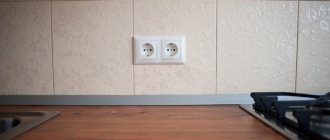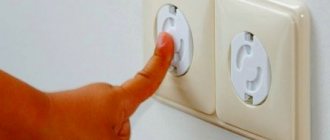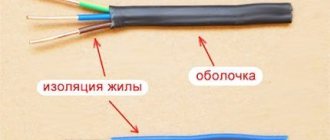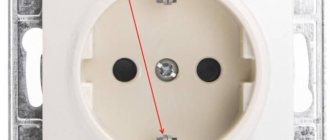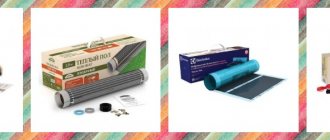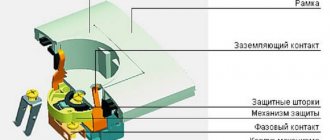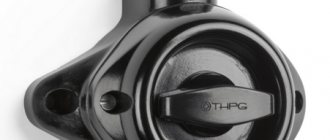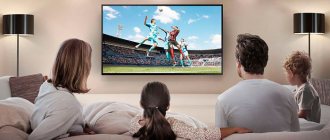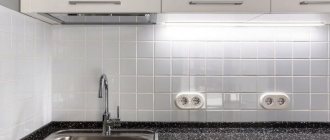The electrical fittings market now amazes with the abundance of electrical installation products that can work perfectly under specific operating conditions. Among such proposals are waterproof sockets. You should familiarize yourself with their advantages and features before purchasing. Do you agree?
We offer reliable information about the specifics of the design and operation of sockets for rooms with high and unstable humidity levels. Here you will learn how to select a device according to the degree of protection, how to read the product labeling. We will introduce you to the leading manufacturers in the segment.
A detailed description of sockets for operation in conditions of direct and indirect contact with water is supplemented with diagrams, a selection of photo illustrations, a video presentation and installation instructions.
Features of waterproof devices
As noted above, the electrical fittings market is represented by a wide range of socket products that meet almost all technical requirements and even protection from moisture and dust.
Such sockets have a special design: a durable housing, a protective valve-cover, an insulated terminal block, a contact group and necessarily grounding.
For the most part, waterproof sockets are not distinguished by a brilliant and unique design, but this does not stop them from being such necessary and safe “things” in the household
The cases and covers of such sockets are made of special polymer heavy-duty plastics that can withstand moisture and low temperatures. The terminal block can also be made of plastic or high-strength ceramic.
The contact group and grounding “petals” are made of alloyed steel and brass alloys, which allows for a reliable and safe connection of contacts with the plug connector of an electrical device.
This corrosion-resistant product is capable of operating in the most extreme weather conditions, with direct contact of drops and jets of water.
A typical moisture-resistant socket has a different form factor; in most cases, it includes a recess in the housing for the plug and a protective cover. The recess protects the socket from the lateral influence of water, and the cover protects from direct moisture entering the socket openings.
The moisture-proof socket cover is made of solid/transparent PVC plastic, rubber, silicone material. It is attached to the body of the product using springs, latches or the material itself in the case of a rubber cover
And yet, the housing and cover of the socket protect the terminal block from dust and other abrasive particles that can negatively affect the condition of the electrical contact between the power supply network and the electrical device.
To compare the degree of protection from moisture and dust relative to the shell of a certain product, the so-called parameter Ingress Protection (IP) is used.
Choosing a device for bathrooms
When choosing sealed devices, you need to focus on the following recommendations from experts:
- It is necessary to give preference to sockets with a moisture protection class of at least IPX4, and better yet, IPX5 or IPX6.
- The optimal number of socket connectors is 2 multi-block, one of which will be used to connect small appliances (razor, hair dryer), the other for larger ones (washing machine, hydromassage system).
- When installing, you should consider the option of placing a separate power supply line specifically for them.
- In terms of color, design and shape, everything is strictly individual. The most important thing is that the outlets match the overall interior design.
There are a number of requirements for electrical wiring. The material for power wires must be copper, and the process of laying cables in the wall must be carried out only with a PVC box.
Shell protection degree
Protection of the shell or housing of any device that contains electrical parts/elements is one of the main characteristics of the finished product in accordance with international standards IEC60529 (DIN40050, GOST 14254).
In any case, every household electrical appliance and industrial equipment must have a certain degree of enclosure protection, which is determined by the standardized 4-character IPXX code, where:
- IP stands for the very concept of equipment protection level;
- the first numeric character X sets the degree of protection against the penetration of dust and particles;
- the second numeric character X sets the degree of protection against penetration of moisture and water.
In addition, in the equipment marking there is another additional letter symbol, which indicates the degree of protection of a person from access to dangerous parts and parts of the same equipment. But it is not used for waterproof sockets.
The Enclosure Protection Level Labeling Chart is a practical guide for selecting an IP level. It is enough to determine what type of shell protection is needed (+)
For the first numeric character we have 7 levels of protection:
- 0—no protection;
- 1-4 - protection from large bodies (pieces of wire, parts of cable, insulation residues, nuts, washers, bolts) and organic particles (stones, earth, sand) with a diameter of over 1 mm;
- 5 - protection from dust, there is a possibility of particles entering the device, which does not interfere with its normal operation;
- 6 - protection from dust, particles do not penetrate inside the device.
For the second numeric symbol we have 9 levels of protection, but we are only interested in options from 3 to 6:
- 3 and 4 - protection against splashes and raindrops;
- 5 - protection from water jets, which does not interfere with its normal operation;
- 6 - protection from a strong water jet, which does not interfere with its normal operation.
For moisture-resistant sockets that are installed indoors, there are several typical enclosure ratings, such as IP44 or IP45.
For outdoor moisture-resistant open type sockets - IP54/55, but the most common and widely used are IP65/66 class markings, which are recommended to be purchased for external use.
Where is it customary to use sockets with moisture protection?
No one has any questions about using simple sockets, since they can be installed almost anywhere.
But for devices with a certain level of moisture protection, there is a specific list of places of application:
- bathrooms with toilets;
- cosmetology centers and sports clubs with facilities for water treatments;
- steam rooms with saunas, showers and baths;
- entertainment centers with swimming pools, water parks with dolphinariums;
- application in outdoor conditions - industrial facilities and external parts of buildings.
It is customary to install sockets with a certain level of moisture protection in bathrooms where a washing machine, Jacuzzi, boilers, hydromassages and dryers are located. For comfort, they are often installed under a curling iron, hair dryer, electric razor and similar devices. Often, sockets are located together with a similar type of switch.
Using moisture-proof sockets
There are practically no questions about the use of ordinary sockets - we put them where they are needed.
But a waterproof socket is another matter - a special class of sockets that are used in special cases, namely:
- bathrooms and bathrooms of apartments (houses);
- cosmetology centers and fitness clubs, where water treatments, saunas, baths, steam rooms, showers are provided;
- swimming pools and entertainment centers such as dolphinariums, water parks, etc.;
- “street” use (on the outside of buildings) and at industrial facilities.
The bathroom of a classic apartment has long ceased to be an archaic room with only a washbasin and a cast-iron bathtub; now it is a high-tech room in which washing machines, hydromassages, Jacuzzis, boilers, electric hoods and dryers are installed.
Image gallery
Photo from
Location of sockets in the bathroom
Waterproof sockets in the kitchen
Power points in swimming pools and saunas
Use in open areas
Don’t forget about the need to have an outlet for a hair dryer, curling iron, electric razor and much more. The bathroom also needs such basic things as an electric hood and a hand dryer after washing. All this “good” must be powered from a reliable source - the electrical network through a waterproof outlet.
Today's beauty salons and sports and fitness clubs provide more than a wide range of cosmetic and health services, which include water treatments.
To safely provide such services, moisture-resistant sockets are used, into which an extensive list of electrical appliances and equipment is connected: from a dryer to a tubular electric heater (heating element) for “heating” the stones in the sauna.
The bathroom space has several danger zones due to the presence of an electrical appliance, so experts recommend installing sockets in zones 2 and 3
There is no need to talk about the need for moisture-resistant outlets in a swimming pool or water park. It is impossible to normally, and most importantly safely, turn on any water ring pump or other injection unit to ensure water circulation in the tank or the presence of the required water flow force on the attraction.
A huge amount of industrial equipment operates from the electrical network in the most extreme environmental weather conditions or with the presence of liquid inside the unit.
In order to eliminate the systematic or accidental negative impact of moisture on the electrical connection between the power supply and equipment, waterproof sockets with the maximum protection class of the shell are used everywhere.
I often install a waterproof socket next to an electric light switch, which must also have a similar class of protection against moisture and water.
Types of electrical outlets
A socket is a plug connector designed for connecting household appliances and instruments and industrial machines.
To select electrical outlets for premises, it is not enough to choose the model you like. You need to have an initial understanding of the different types of devices and take into account a number of factors in the process of selecting models for different rooms.
There are several types of socket devices, grouped into blocks:
- By installation type. Based on this feature, sockets are usually divided into hidden and overhead. The first ones are placed in rooms where decorativeness is important and there is no room on the walls for protruding elements. The latter are used in wooden houses and cottages where retro wiring is planned.
- By number of connectors. Sockets with 1 to 3 connectors are widely used. Devices with 4 or more connectors are installed and used in places that require connecting a large number of electrical appliances.
- By connector type. This refers to marking using Latin letters. In Russia and post-Soviet territories it is customary to use the letters C, F and E. There are at least 13 of them all over the world.
There is also a division based on voltage - 220 V (for household appliances) and 380 V (for machine tools and complex machines).
When choosing sockets, manufacturers recommend paying attention to the manufacturer and the color palette. You should not give preference to inexpensive products made from cheap materials: devices significantly lose in such indicators as reliability and safety.
General safety rules
It is clear that for the safe use of household appliances and auxiliary equipment, you need to follow trivial safety rules when connecting or disconnecting an electrical appliance to an outlet.
For example, before plugging the plug into the socket, inspect the cavity of the socket connector and make sure that there are no foreign objects in the socket, and that there are no fumes and “dark” spots on the surface of the socket and near it on the surface of the wall where it is installed.
If obvious signs of “burning” are visible on the surface, you must immediately stop any attempts to connect the electrical device to the network and turn off the packager. Then replace the socket
Next, inspect the wire of the electrical appliance and the plug, check for the absence of exposed parts of the wire and darkening on the cable. If the above factors are detected, stop using this electrical appliance and call a specialist. Or check the fault yourself if you have the appropriate skills.
When disconnecting the plug from the socket, it is recommended to hold the surface of the outer panel of the socket with your free hand and smoothly pull the plug out of the socket. If you sharply “pull” the plug from the socket, you can “rip” the terminal block from the socket.
Do not try to put the socket back in place under any circumstances. First you need to turn off the electrical network at the distribution panel, then turn off the device, remove the external panel of the socket and only then return the terminal block to the socket of the socket
Everyone knows that water is an excellent substance for transmitting electrical charge, therefore it is necessary to avoid any contact of moisture with the conductive element of the network, which is the socket. Although the outlet itself is protected from moisture, this does not mean that electricity cannot affect human health.
If you find water near the outlet, we strongly recommend that you completely turn off the power supply in the entire room, for example, at the distribution brush, and call a specialist.
Optimal height for socket
Typically, electrical sockets are installed at a height of 90-100 cm from the floor. The user does not have to bend over or reach up to connect/unplug the plug. In residential premises, it is allowed to place power points at a distance of 30 cm from the floor. But it is not recommended to do this in the bathroom. Firstly, flooding cannot be ruled out, and secondly, condensation may accumulate in the lower tier. Therefore, the optimal distance for installing a socket will be about 90 cm from the floor line, 10 cm from a window or doorway, 15 cm from the ceiling.
Sockets for outdoor use
If you are the owner of a private house, a country estate, or an ordinary 6-acre plot of land with a trailer, then there is no need to talk about the variety of situations when you need a simple outlet “at hand.” In order to avoid purchasing 100-meter extension cords, it is rational to install the required number of sockets on the outside of any object.
Waterproof socket blocks can be installed almost anywhere: the wall of a building, on a wooden support for a gazebo, on the “deck” of a mini-pool, inside a stone/brick fence support, on the outside of a wall in a garage or other utility room.
Innovative technologies are penetrating everywhere, even such public places as parks, squares, and embankments are not lagging behind in this regard. Now there is no need to run home to charge your favorite device
These sockets can easily be used to connect virtually any electric tool or special equipment, which is more economical in terms of energy consumption compared to devices powered by gasoline and diesel engines.
For example, we plug into an outlet an electric saw, electric pruning shears, an electric barbecue and oven, a submersible pump and a pressure water/air compressor. Let's move on to passive relaxation - we can easily connect an external audio system, a television panel and much more to such sockets.
Regardless of the purpose of using the “street” outlet, we recommend adhering to some notes on the choice of location and method of mounting the electrical connector:
- It is advisable to install the socket under any ledge or visor;
- height from the ground surface at least 75-80 cm (taking into account the possible level of snow cover);
- the cable for the socket must be with protective grounding;
- connecting the wire to the socket exclusively from below - this will prevent draining water from getting inside the electrical equipment.
Protective membranes must be provided inside the socket, and the contact group must be made of bronze or some copper alloy. Such an “outdoor” moisture-resistant outlet is integrated into an individual package - this will protect the rest of the power supply network in the event of a malfunction.
Outdoor sockets
If you plan to install waterproof devices in outdoor conditions for a country house, cottage or summer house, you should pay attention to certain points.
Do not use extension cords that are extremely long (100 m). You just need to consider the location of the outlets on the outside of the house. For this purpose, you can use the supports of wooden gazebos, the internal parts of fence supports, the outer walls of the garage and other utility rooms.
It will be possible to successfully connect devices for various purposes into ready-made socket connectors. This could be an electric saw, a stove or barbecue, an external audio system or a television panel.
Conclusions and useful video on the topic
A worthy example of the correct selection and installation of a waterproof double socket with correct connection to a separate circuit breaker:
The following video is presented solely as an introduction to advanced technologies in the field of electrical wiring components:
Finished products from popular manufacturing companies LEGRAND, SCHNEIDER ELECTRIC and BERKER have excellent characteristics of strength, reliability and safety.
It is also possible to purchase fittings from the Swedish ABB and the German GIRA, but these companies cost a little more due to the use of rather expensive materials in the production of products, including bronze and gold-plated metals.
We are waiting for your stories about choosing sockets for installation in bathrooms and swimming pools. Please write in the block located below, under the text of the article. Here, ask questions and comment on the material offered for review.
Is it dangerous to install sockets in the bathroom?
Placing any electrical appliance in a room with high humidity and frequent splashes of water poses a potential hazard. Water is an excellent conductor, which increases the risk of electric shock if it leaks. Even a small fault can lead to a short circuit. However, if you follow safety precautions, install power points in accordance with current standards (GOST R 50571.11-96) and use sockets with water protection, the danger is reduced to zero. Modern rules for the design of electrical installations (PUE 7.1) regulate in detail all the nuances.
Dividing the room into separate zones
When choosing an installation location, you must follow the rules and be guided by the PUE, and all distances must be observed, including the installation height of sockets. It is recommended to arrange the sockets in such a way that in the event of a breakdown, they have easy access for replacement or repair. To avoid violations of installation rules, the entire bathroom room is conditionally divided into several zones.
According to regulatory documents, the entire territory of the bathroom is conditionally divided into several zones. They determine the degree of safety and allow you to most optimally develop a plan for the placement of electrical appliances and equipment, laying wiring to each point in the shortest possible way.
The conditional division of the bathroom includes the following zones:
- Zone 0: Covers the inside of the shower tray and the inside of the bathtub. It is not possible to place any waterproof electrical equipment in this location.
- Zone 1. Located directly above the shower tray, bathtub, washbasin or sink, at a height of 2.5 m from the floor level.
- Zone 2. Located up to 60 cm in all horizontal directions from cabinets, shower tray, bathtub or sink. The height from the floor is up to 2.25 m. It covers the area above the 1st zone at a height of 3 m from the floor.
- Zone 3. Overlaps the 2nd zone by 2.4 m, maintaining a height from the floor of 2.25 m. The height above the 2nd zone is up to 3 m. Based on these parameters, the height of the sockets in the bathroom is determined.
Grounding and RCD
Grounding is the most important part of safety when installing any electrical wiring, and even more so in the bathroom. What should residents of old houses that do not have a ground loop do? In fact, it is there, since all electrical systems are required to be grounded.
If this were not so, electrical accidents in residential buildings would occur much more often.
On the power supply panel where the electric meter is connected (usually it is located in the entrance) you need to find screws in a metal case. They are the required ground loop.
You just need to connect the apartment’s individual power supply panel to this circuit using a single-core wire. Alternatively, the ground connection can be connected directly to the bathroom junction box.
Sometimes you can find recommendations for installing grounding to building fittings or to metal pipes in the house. But if during the construction of the house a potential equalization system was not provided, this measure will be useless and even dangerous.
Improper grounding may cause a short circuit or electrical injury.
The installation of an RCD - residual current device - is not even discussed, it is mandatory. This device instantly responds to changes in the potential difference between the phase and the neutral wire. Electricity on this part of the electrical wiring occurs instantly, which avoids accidents, equipment breakdowns and injuries.
Experts recommend using an RCD of approximately 30 mA for the bathroom. Practice shows that the combination of an automatic washing machine and a 10 mA RCD often leads to false alarms of the protective device.
For powerful electrical appliances, it is also recommended to install circuit breakers. For a boiler or automatic washing machine, you can use such a 16A device. For low-power electrical appliances, such a protective measure is not necessary. Any wire connectors, even hidden under a layer of tiles, are not allowed in the bathroom.
All connections must be made outside the bathroom and carefully insulated, including distribution wiring.
Comments:
Skept
As for me, it’s better to run the cable out of the house than to fence off an outlet on the property. Rain, snow, frost, dew are not the best friends for electricity
Andryukha
Skept, we are not talking about the fact that these sockets will be constantly connected to the network. They are usually connected to a separate package and work only in the dry season. Feed the gazebo or irrigation system according to schedule. You can, of course, pull the extension cord from your house to the gazebo every time you want to drink tea there, but it’s much more convenient to turn on the machine in the house and connect there.
Valentine
In the case of an outdoor outlet, I would not buy IP 66, because... it will still not be completely immersed in water, and there is no reason to pay twice as much for such functionality. If the socket is lying in a puddle, no matter how protected it is, I won’t not only plug it in, I won’t even touch it if it’s energized at the time
Jamis
For some reason, no one talks about protecting the person with the street socket. It seems that the text was written in 90. Firstly, it is imperative to install an RCD with a 5mA cut-off, like for a bathroom. And secondly, it is necessary to use an isolation transformer to eliminate the possibility of severe electric shock. If you do not use a 220V electric tool, then the best thing is to use safe voltages of 12 or 36V. Fortunately, there are plenty of such lamps in stores.
Leave a comment Cancel reply
Related Posts
What is a Legrand pass-through switch, features of its connection diagram.
Connection diagram for a pass-through switch from three places - features, as well as installation sequence
German ABB sockets combine reliability and stylish design DIY installation of an external socket, detailed instructions
According to version
The products in question also differ in their design options. They are:
- Made of plastic;
- Metal (using brass, steel or other alloys);
- For installation in the floor (subject to ceramic tile cladding);
- For installation in the floor with subsequent use of laminate, parquet or carpet;
- With increased resistance to moisture (IP66, IP44);
- With different installation depths;
- To accommodate one socket;
- To accommodate from two to twelve sockets.
Also, sockets (hatches) in the floor may vary in color. The following options are possible here - gray, beige, white, graphite, brass, steel or aluminum colors.
What sockets can be installed in the bathroom
Electrical installation devices installed in rooms with high humidity are subject to higher requirements. The presence of grounding, protective curtains for plug holes and a tight hinged lid is considered mandatory. In addition, they must withstand increased load. Legrand sockets from the Plexo series with water protection IP 55 meet all these conditions. The rubberized housing prevents water from getting inside. There are blocks of two or three sockets of the same series, which is very convenient. Legrand can also offer installation boxes (Botibox series) for quick and easy installation/replacement of the power point.
Surface-mounted waterproof socket
The technology most often used, due to its simplicity, involves external installation. There is no need to use any additional devices. The socket block is disassembled and the position of the mounting holes is marked on the wall surface. The verticality of the marking must be controlled using a building level.
Holes in the wall are made using a drill. To do this, use a diamond-coated crown or a drill for tiles, and when covering with plastic panels, use wood or metal. For the main material of partitions (brick or concrete), a hammer drill is best suited.
Overhead waterproof socket.
The body is attached to the wall surface using dowel nails. To prevent condensation from seeping through, the fasteners are treated with a small amount of sealant. Then a contact block with the mounting end connected to it is installed in the mounting protrusions. Next, all that remains is to put the housing cover back and secure it with screws.
